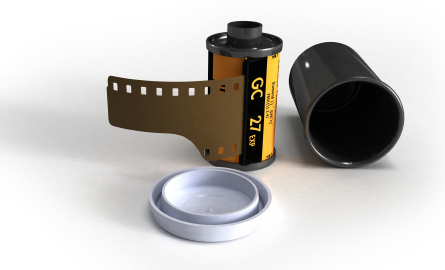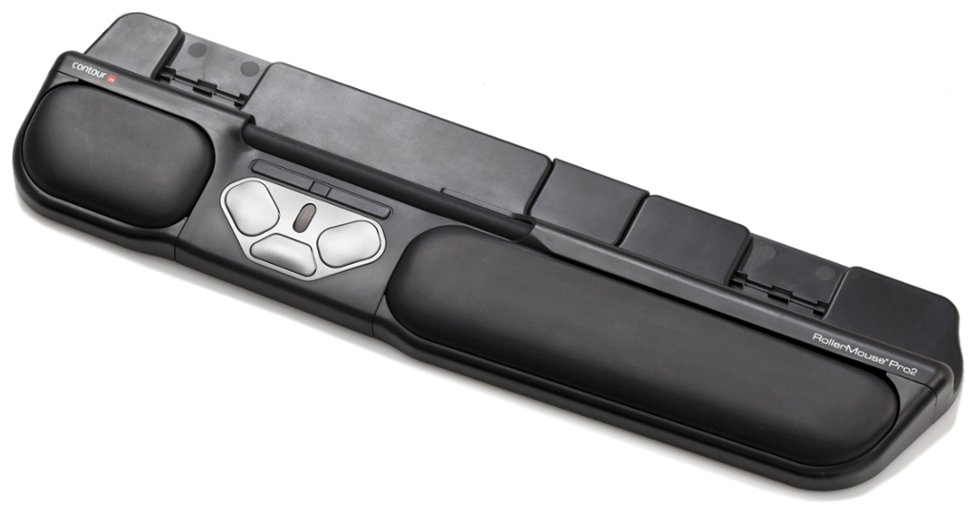Let's start at the beginning: cameras takes pictures by capturing light on an electronic sensor. Prior to digital cameras, this sensor was a piece of film but nowadays it's a microchip that essentially performs the same function.
 |
| Kids today will have no idea what this stuff is. |
Every camera camera lens also has a mechanism that controls how much light is allowed to enter through the front and pass to the shutter. The size of this opening is called an aperture, and it is one of the three key pieces that, when put together, control much of how photography works (the other two being shutter speed and ISO, but we'll get to those another time). It's a lot like how our own eyes work, actually. Have you ever woke up in the morning, turned the lights on too soon, and had to squint or close your eyes quickly because things were so bright? That's because when it's dark, our pupils open wide in order to let in more light. And in bright light, our pupils shrink because there is so much light they simply don't need to be open in order to let enough in. For example, in the image below the pupil on the left is dilated and will let in a lot of light. The pupil on the right is contracted and not much light will be let in. At night or in dark conditions, our pupils open big to let in every bit of available light, but in the daytime our pupils contract because there is so much light around us that they don't need to let it all in for us to see properly.
 |
| Image courtesy of Aurora Health Care |
When my wife and I were looking at DSLR cameras, I was surprised to find out that most of the standard lenses they came with could barely zoom in and out. A common 18-55mm "kit" lens doesn't really zoom in that much, and this confused me. Our Panasonic ZS7 had a monstrous zoom lens, so why wouldn't a fancy DSLR have the same thing? Because even though our ZS7, and most pocket cameras nowadays, have lenses that can zoom in and out, they make a critical compromise in order to do so: they can't let in very much light. And not only that, but the image sensor (or film) inside most pocket cameras is much, much smaller than those found in DSLR cameras.
When a lens goes from wide-angle (you can see lots of stuff) to telephoto (you zoom in), the physical elements of the lens's construction behave in such a way that the maximum aperture (or opening) of the lens almost always shrinks. It's just not physically possible to keep a really big aperture when zoomed in, unless you spend thousands of dollars on a mega-fancy lens. And in bright light situations, like a nature hike or backyard picnic or outdoor sporting event, this is fine because there is so much available light that the camera does not need a very big aperture in order to get enough light to take a nice photo. You can even zoom in on things, like a woodland critter or a single athlete, and take a decent picture because the camera has so much light to work with. But when taking pictures indoors or at night, it is simply not possible for the apertures on many small cameras to be big enough to let enough light in. This is why most cameras have a built-in flash: they have to create their own light in order to make up for their small lenses, which are incapable of letting a large amount of light through the lens to reach the image sensor.
 |
| A 110 camera with a stack of single-use flash bulbs. I actually had one of these when I was a kid :) Image courtesy of Wikipedia |
 |
| Ever wonder how photographers get shots like this? They shoot in low light with a tripod and leave the shutter open for a long time :) Image courtesy of user TuffTuffTuffTuff on Reddit |
• In order to make the lens let in as much light as possible (f/3.5), the lens has to be at its widest-angle setting of 18mm. Indoors or in low-light settings, a flash might not be necessary.
• When zoomed in all the way to 55mm, the lens is not capable of letting in much light (f/5.6). Indoors or in low-light settings, a flash is almost always necessary.
These limitations are not necessarily a bad thing, but they are important to know when shooting. Also, a kit lens is relatively cheap, which makes it a good choice for photographers who want a lens that, while not perfect, is decently suited for a variety of settings. For the sake of comparison, let's look at the Nikon 27-70mm f/2.8 lens.
 |
| *drool* Image courtesy of Nikon USA |
Let's bring this back to the realm of pocket cameras, like my Panasonic ZS7, which I said had a "monstrous zoom lens." Keep in mind that in order to get a telephoto zoom lens on a little camera with a little image sensor, the lens aperture has to be (thanks to the laws of physics) super duper tiny. Compare that to the Sigma 200-500mm lens which really is a monster, and has an incredible zoom while maintaining a freakishly large aperture of f/2.8 for the entire range:
Before I wrap this up, I want to touch on one critical question that many people still have: how do you set the aperture on your lens? On many pocket cameras, you can't. Most of the time this is controlled by the camera's internal software, though many cameras have scene-specific modes such as "Sports," "Fireworks," "Beach," etc. that contain aperture-and-shutter-specific presets for a few given scenarios. Some pocket cameras do have manual control options that allow you to set the aperture, shutter, and ISO, but they are often hidden in various menus or control dials. If you have a pocket camera it's worth checking out, though, and some even have dials that say something like "M A S P" or "M Av Tv P"
M = Manual. You have full control over the aperture and shutter values.
A/Av = Aperture mode. You control the aperture of your lens, and the camera determines the appropriate shutter speed.
S/Tv = Shutter mode. You control the shutter speed, and the camera determines the appropriate aperture setting.
P = Program auto. The camera determines what it thinks are the best aperture and shutter values.
To adjust the aperture, switch to A or Av mode (you can also use the M mode, but that's a tad more complicated) and you will then be able to set the aperture of your lens using a dial or series of buttons on your camera. Keep in mind that a smaller number means a bigger aperture, or more light coming in to the lens. A bigger number means a smaller aperture, or less light coming in to the lens.
So that's the basics, folks! There's a lot I didn't cover here, and a lot that I didn't really explore in depth, so if you have questions just leave me a comment below and I will be happy to help as best as I can :)
































